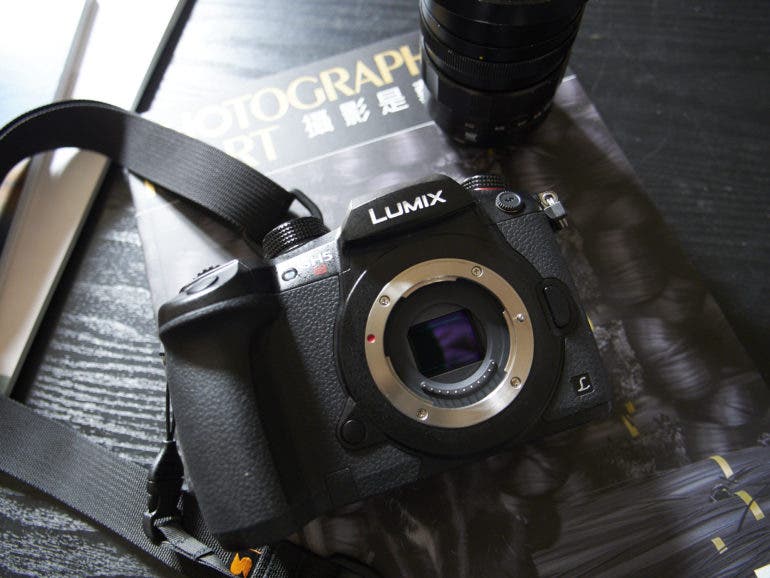Is a 32mp Sensor Big Enough, or Is It Too Late for M4/3?

Word on the street is that an 8K capable sensor could be available for OM Digital Solutions, Panasonic, and others soon.
It’s no secret that both Olympus (now OM Digital Solutions) and Panasonic have desperately needed a new sensor. For the past six years, the same old 20 Megapixel sensor has been slapped into their cameras. Because of this, the Micro Four Thirds platform has been at a standstill. Meanwhile, other platforms such as APS-C have moved on in leaps and bounds. This lack of progression has forced photographers to look elsewhere. However, this could change as a new sensor that’s 8K capable could be making its debut soon. Is it too little too late for the platform? Will it be enough to make photographers reconsider the M4/3 platform? Let’s talk about this after the break.
Over at 4/3 Rumors, you’ll find a post that talks about a new Micro Four Thirds Sensor From Sony. The new Sensor will apparently be able to record in 8K. This means the sensor will be at least 32 megapixels. Noise about this sensor has been around since late last year. However, the informant who went to 4/3 Rumors has now apparently confirmed that it is coming. Is this going to be enough to entice more photographers and videographers to the platform? Will 32+ megapixels be too much to cram into such small sensors? Let’s discuss.
Why Would You Pick M4/3 Over APS-C or Full-Frame?
One of the biggest selling points of the Micro Four Thirds system is it’s weight advantage. This won’t change any time soon. Yes, Full-Frame Mirrorless cameras are getting smaller (see the Panasonic S5). However, the lenses are just as big as they always have been. Having a smaller overall package to carry around that’s half the Full-Frame weight is a huge selling point. Adding in a better sensor to the mix should make Micro Four Thirds much more desirable.
Can Current Lenses Even Resolve That Many Megapixels?
I would have no doubts at all about this. M.Zuiko lenses and Pana/Leica lenses are some of the sharpest I have ever used (and trust me, I’ve used a lot). I have always thought these lenses would resolve a lot more detail with a more powerful sensor. If stories about the 32+ megapixel sensor are true, you wouldn’t have to worry about this.
Will Noise Be Out of Control?
We all know that, due to the small sensor size (physical size) of M4/3 sensors, low light performance is not the best. It’s not bad, but it does struggle when compared to other platforms. Cramming more megapixels into the same space should, in theory, mean more noise. Why? Well, because the photosites themselves will be that much smaller. Each pixel will be able to gather less light, and less light means more noise. However, you have to remember that the current 20 Megapixel sensors in Micro Four Thirds cameras are regular CMOS sensors. New BSI (Back Side Illuminated) sensors can control noise at higher ISO’s much more efficiently. So, you might find that noise levels might remain about the same as they are now. However, you’d have the extra benefits of increased dynamic range and detail in your images.
Too Little Too Late?
Has the Micro Four Thirds ship already sailed? Unfortunately for some, I would say yes. Many photographers who used the platform have moved on to either APS-C cameras or Full-Frame options. However, many I have spoken with lament the extra size and weight of other platforms. It’s possible that a big leap forward like this could entice many to give the platform another chance. In fact, it could even scoop up many first time users too. You cannot deny that the Micro Four Thirds platform has the best IBIS of any system. Unique AI features have also found their way into cameras of late as well.
Panasonic has recommitted itself to the platform. OM Digital Solutions plans on focusing on video and high-end cameras for photography too. A 32 Megapixel sensor lines up with those visions perfectly. Imagine a Panasonic G10, a GH6, and GH6S with a 32 Megapixel sensor. The G10 would be a photographer’s dream, while the GH6 and GH6S would be ideal for videographers who need 8K. A new Pen F II from OM Digital Solutions would be insanely popular with a beefed-up sensor. There’s also no doubt that the new sensor will come with a new processor, which would mean improved autofocus features and more AI. An EM1X II with a better sensor and improved tracking performance would be wonderful for birders and sports photographers. An EM1 IV would be perfect for photographers like myself who specialize in events, portraits, and landscapes. There could be some exciting times ahead.
Time Will Tell for M4/3
Technology has not been in favor of M4/3 cameras for a while. Still, I believe there is a future for the platform. Improving on what we like and use already will be great. OM Digital Solutions and Panasonic will have to find ways to squeeze every inch of performance out of this new sensor without impacting noise. They also need to retain everything else there is to love about the platform. If they can do that, then it could be a slam dunk. However, there’s much to be done in terms of re-branding the platform. Better messaging about what these cameras can do will be needed. New cameras with this sensor will need to appeal to a wider user base and not just to wildlife and nature photographers. If Panasonic and OM Digital Solutions can reposition themselves, this new sensor could do wonders.
What do you think about the new potential M4/3 sensor from Sony? Do you think this will give the platform the shot in the arm it needs? Would you consider using the platform with the new sensor? Let us know in the comment section below.